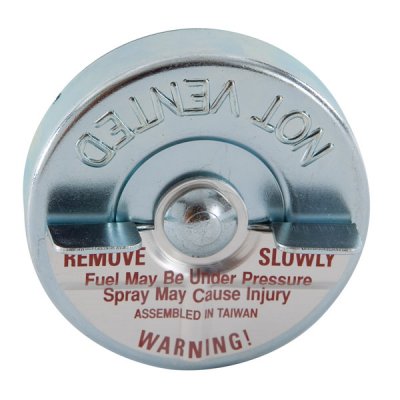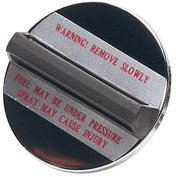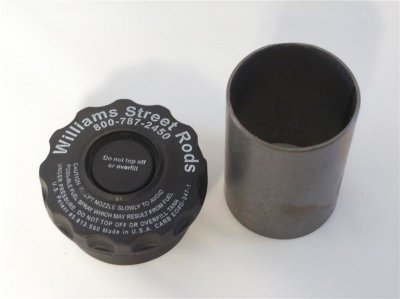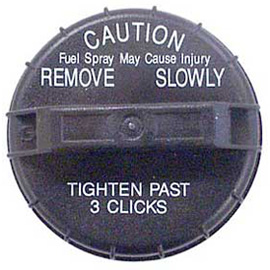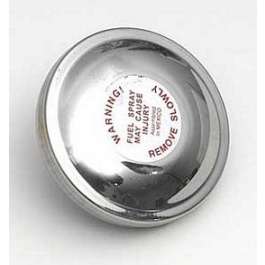After thinking about this today while at work I'm more sure your problem is caused by percolation. This is when the engine is shut off and the engine temperature rises it causes the fuel to boil in the bowl and leak out of the boosters. There are a couple of things you can do to cure this, one is make sure the fuel level is not too high. You can also lower the fuel level about 1/8" below the sight plug hole and this will cure it sometimes. The heat from the engine will rise into the carburetor and will cause the fuel to boil. Installing a phenolic heat spacer between the carburetor and the intake or a heat shield can cure this. These parts will prevent heat from getting to the carburetor and boiling the fuel.
Here are some other things to look into if the above doesn't work for you.
The pressure in the fuel tanks is actually a normal condition. The fuel tank is vented to the engine's purge system via the charcoal cannister, installed on top of the cannister is what is called a "two pound check valve". This keeps all the vapor contained in the tank and lines until it reaches about two pounds of pressure, then it releases it through the cannister and into the engine.The fuel pump it self doesn't remove the pressure/fumes if it did it would vapor lock.
The valve is used so that when parked the car does not fill the cannister with vapors, thus causing a very hard hot start. One of the adverse side affects is that the tanks are constantly being subjected to expansion and contraction, which weakens them, usually at the seams and under belly, creating fuel/vapor leaks. You can disconnect the line from the tank to the charcoal canister so the tank will vent directly to the atmosphere,that way the tank will never over pressurize,or you could drill a 1/8 in the gas cap. Now that being said, the charcoal canister might just be clogged up from years of dirt and dust collecting in the black filter in the bottom of the canister or there could be a pinched or clogged tank to canister vent line.I'd check the above before unhooking or modifying any thing.
Leaking fuel is most likely due to a bad float valve, bad float, or excessive fuel pressure. The first step is to check the fuel pressure, which should be between 4 psi and 7 psi. If the fuel pressure is correct, either the float has sunk, or there is a problem with a float valve. If you have black nitrophyl plastic floats on a carb over 5 years old, the float may be soaking up gas and sinking. Also, if the carb is near, or over, 5 years old, the float valves (inlet needle and seat assemblies) may need replacing. Float valves have viton rubber tips (most cases) and rubber o-rings that can go bad, especially when they sit around for long periods, as on an old car that hasn't been driven, or a boat stored for the winter.
Your carburetor requires 4 to 7 psi of fuel supply at all times, under all conditions. Many "carburetor" problems are actually fuel delivery problems. Bogging and not enough power can be caused by too little fuel, and overflowing can be caused by too much fuel pressure. Before blaming your carburetor for problems you MUST check the fuel delivery while driving under whatever condition you use the vehicle. This means rigging up a fuel pressure gauge outside the passenger compartment and going for a drive.

